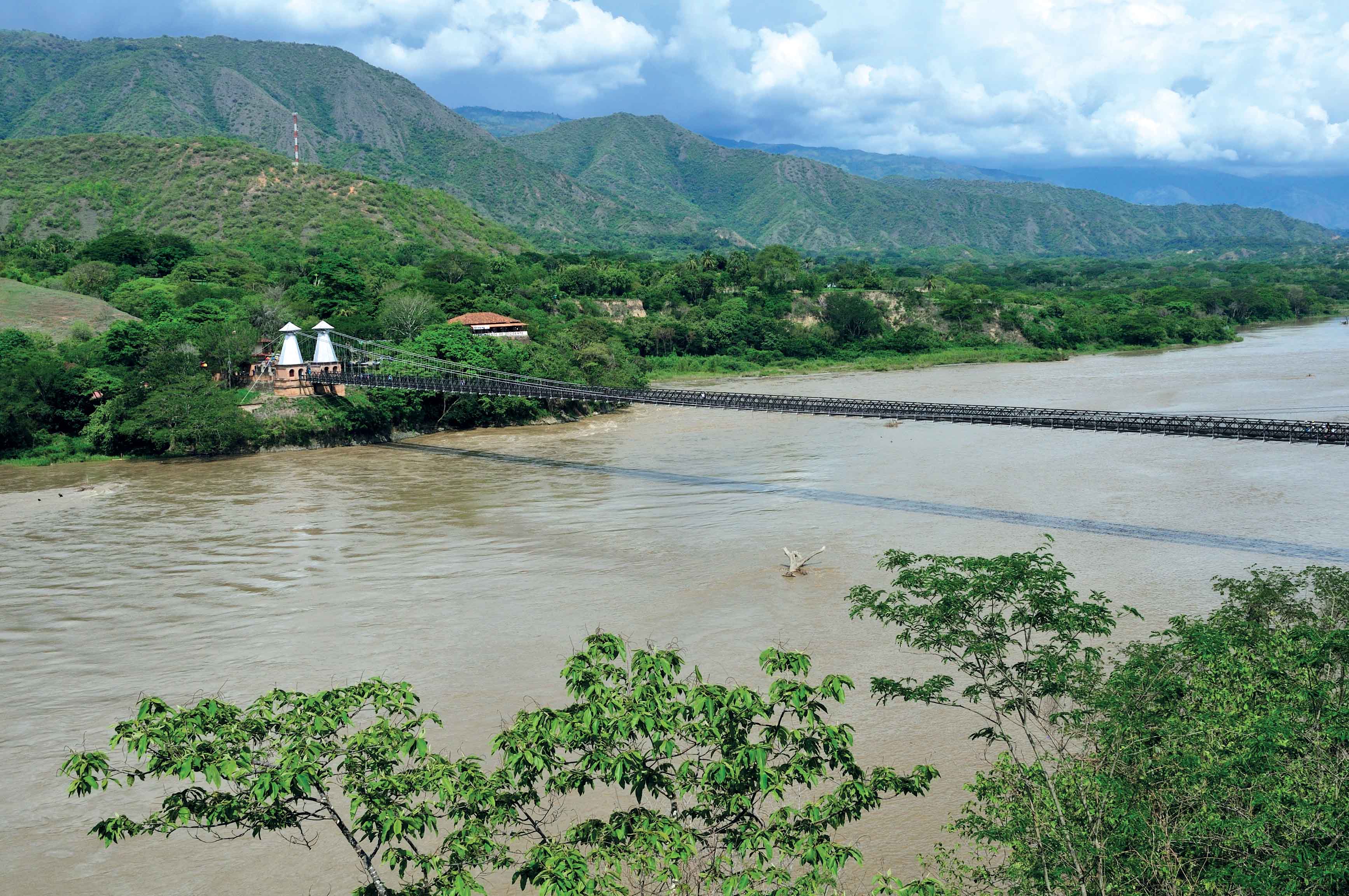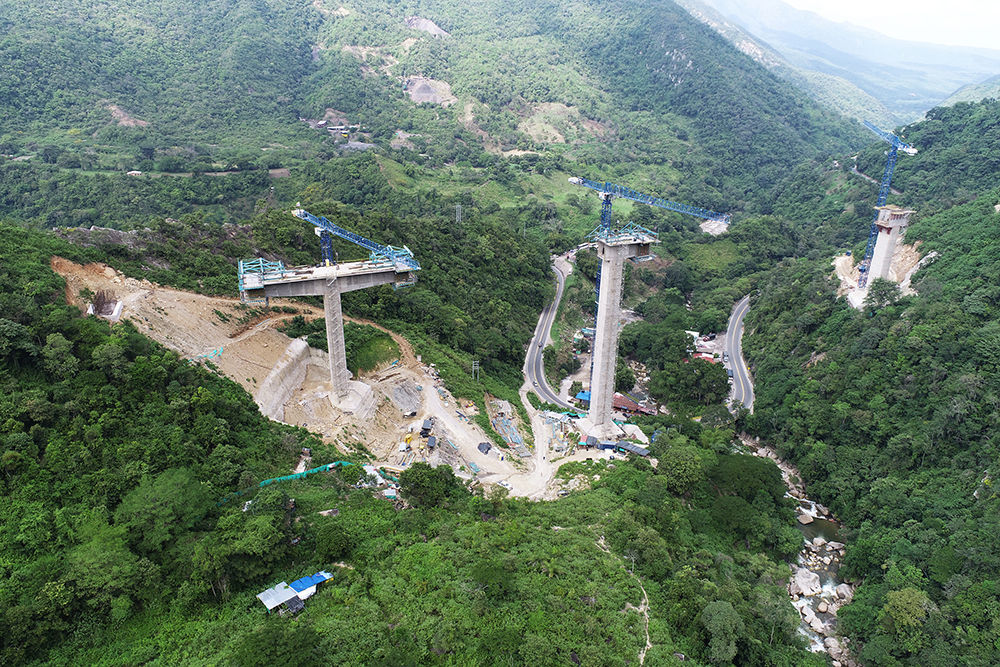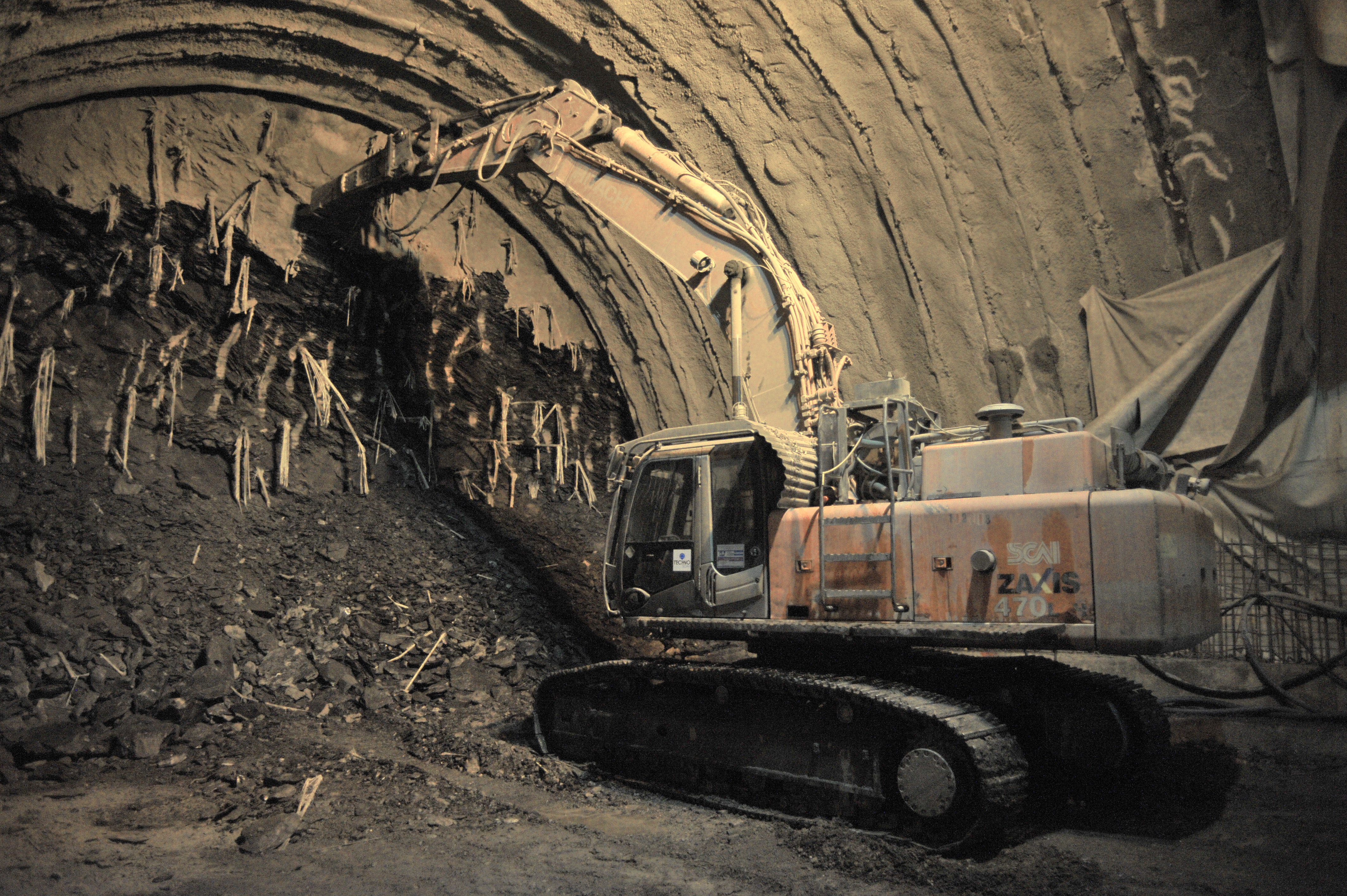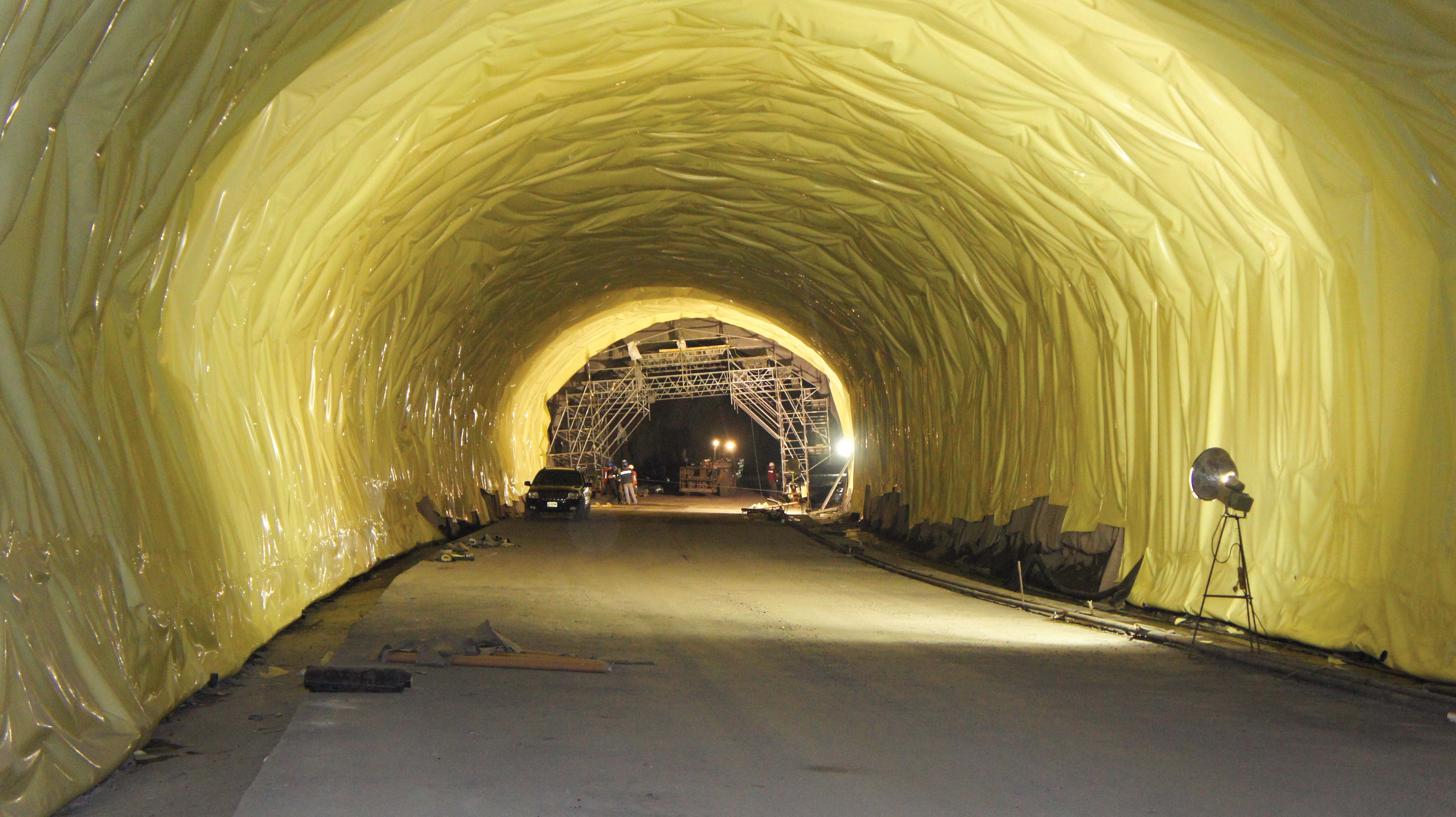The challenging driving work for a tunnel stretch on Colombia’s Santa Fe – Cañasgordas highway has been completed. This important infrastructure project will help boost transport and develop this area of Colombia and forms part of the country’s fourth-generation (4G) highway development project. The highway will improve connectivity between Colombia's central region, its Pacific Coast, and its Atlantic Coast, cutting journey times from around 8-9 hours to just 4 hours 30 minutes, while also boosting safety for drivers.
The project includes the rehabilitation of 60km of roads, the construction of 60km of new roads, maintenance to 60km of existing roads, the construction of 37 bridges, and the construction of a new control centre.
According to the original project approved by Colombia’s Ministry of Transport, the Santa Fe de Antioquia – Cañasgordas section has an approximate length of 38km and its design allows a speed of 80km/h. The route includes the Guillermo Gaviria Echeverri Tunnel as well as various access roads.
To speed construction, more than 2,000 personnel have been working in shifts to ensure that the construction is carried out 24 hours/day. In total, this project has cost €160 million, contributed by the Government of Antioquia and the Municipality of Medellín, responsible for the execution of Section 1, and the National Government, through ANI, in charge of Section 2. To manage the project, the work has been divided into four Functional Units (UF).
The UF1 Western Tunnel – San Jerónimo, with the improvement of the road and the construction of a second road. The UF2 has been divided into two sections: the first, 14km long, where the road was improved and the construction of a second road between San Jerónimo and Santa Fe de Antioquia; and the second, which corresponds to the Santa Fe de Antioquia – Cañasgordas section, for operation and maintenance. The UF3, the Aburrá Cauca highway – Western Tunnel section connection, with the construction of the second Western Tunnel and its accesses. Finally, the UF4 has also been divided into two sections: the first with the rehabilitation of the existing road and the improvement of the bridge over the San Juan River; and the second with the rehabilitation of the existing road between Bolombolo and Santa Fe de Antioquia.
A key section of the Santa Fe de Antioquia and Cañasgordas section is the 9.7km Gaviria Echeverry Tunnel (GGE), the longest in Latin America when it comes into operation in 2025. The GGE Tunnel will allow traffic speeds of up to 80km/h. This stretch is being built by the region with resources from the Antioquia Government and Medellín authorities, with a total cost of €400 million.
The tunnel breakthrough occurred in October 2023 with fitting out work now underway and the entire project is expected to begin operation in the second half of 2025.
From a morphological perspective, studies for the 9.7km alignment of the GGE Tunnel confirmed the presence of two large geological formations: the first located in the Cañasgordas and Barroso portal; and the second in the Giraldo portal.
The Cañasgordas and Barroso portal features sedimentary rocks that originated in a marine environment and has characteristics that make it more susceptible to deformation, which resulted in technical difficulties during the excavation process. The Giraldo portal is composed of igneous rocks, which is more favourable for excavation due to the quality of the rock mass.
The traffic bore for the GGE Tunnel has 1m-wide platforms, 3.7m-wide lanes and an extra width of 0.4m, and is 5m high. However, a false ceiling has been installed to separate the upper section of the tunnel as this provides the space needed for the important fresh air ventilation system. The 9.7km length of the tunnel means that fresh air has to be circulated through constantly to remove exhaust fumes and ensure safety for users.
The GGE Tunnel was excavated from both portals, with one close to Giraldo and the other in the vicinity of Cañasgordas. Each of these works was carried out according to two different geological conformations. Igneous rocks were excavated from the Giraldo portal, with basalts and hard granite featuring good geomechanical characteristics in general. However, some fractured and fault zones were encountered and their low quality generated certain technical difficulties during drilling operations.
At the Cañasgordas portal, the tunnellers encountered sedimentary rocks such as mudstone and sandstone were found, whose geomechanical conditions were classified from very bad to regular and highly fractured.
Much of the tunnel excavation work was carried out using proven drilling and blasting technology, with Epiroc's three-boom XE3C and two-boom E2C jumbos equipped with ABC Total navigation systems to ensure drill accuracy and efficiency. The proven NATM method was also used. The engineers paid close attention to the rock conditions through continuous monitoring of their geotechnical instrumentation. This allowed them to see which method was best suited to the immediate geological conditions.
Because of the length of the tunnel drives, ensuring fresh air is able to reach the tunnel faces posed a challenge. During tunnelling work, fresh air was provided initially to the face using a large electric fan at the portal, which pushed the air through a flexible ventilation channel that was located at the top of the drive. But given the length of the drive and the pressure on maintaining the advance rate while also securing the roof and installing the tunnel lining system, there were issues as to how the ventilation system could be brought forward as well.
Installing the tunnel lining required the use of scaffolding and this interfered with the task of bringing forward the flexible ventilation channel, as well as ensuring the air system remained undamaged (and making repairs if needed). These two processes were further complicated by the nature of the drill and blast procedure as well as the transport of excavated material from the face.
The rate of advance was affected and there were concerns as to whether the schedule could be maintained, while the quality of the air reaching the working faces fell short of requirements at times, resulting in personnel having to wear masks. A solution was found however, through the use of the parallel emergency tunnel as an air supply system. This method is used often in mining but is comparatively unknown in the tunnelling sector.
The installation of the supports has been calculated according to the type of terrain found and the length of the section where the protective coverage will be built, with sections less than 300m, between 300-600m and greater than 600m.
The tunnel has a waterproofing system that includes the collection of water leaks, channelling it outside the tunnel and directing it to the treatment plants, minimising the environmental impact of the link.
Likewise, in the areas where greater volumes of water were detected, a special drainage system has been installed to waterproof the infrastructure, in order to avoid damage in the most extreme hydrogeological conditions.
The tunnel features a hydraulic concrete lining, which is designed to ensure that the infrastructure will remain in optimal condition and is in accordance with the Colombian regulations. The concrete lining has been reinforced with steel bars and synthetic microfibres, which were added to provide extra security in the event of a fire inside the tunnel. The work complies with the same safety standards recommended by the EU’s Directive 2004/54/EC, as well as the US NFPA 502 regulations for the fire protection system.
To optimise safety for drivers, the tunnel is being equipped with 90 SOS cabins and 115 niches housing fire hydrants. There are also nine emergency parking areas at set distances of 1,000m.
The parallel emergency tunnel runs alongside the main tunnel and has access every 450m to the main tunnel, in order to carry out rescue operations in the event of a incident inside.
Tunnel in numbers
Work Quantity
Excavation (m3) 1,500,000
Schotcrete (m3) 70,000
Concrete coating (m3) 700,000
Reinforcing steel (tonnes) 4,000
Anchor bolts ((units) 360,000
PVC sheet (m2) 480,000
Water pipelines (m) 350,000
Source: ANI/GT
Finally, the tunnel also has a state-of-the-art ITS system such as voice and video systems, infrared cameras and gas concentration meters, among others, connected to an operation and control centre with a fire station, ambulances and rescue vehicles.
The equipment
For the complex excavation work of the tunnel, the Antioquia al Mar consortium, selected by the National Infrastructure Agency (ANI), used two- and three-arm Jumbo rigs from Atlas Copco. These rigs have are equipped with software that can determine the characteristics of the rock face geology.
The Jumbo Boomer XE3C is designed for use in tunnels with face areas of up to 190m2 and drill holes up to 64mm in diameter. The XE3C is equipped with an RCS control system to optimise productivity and also features self-diagnosis functions. The system helps saves time and resources as well as minimising human errors. The Epiroc rigs managed to achieve a high average advance rate that boosted productivity.
In addition, Epiroc equipment was also used to build the ventilation system and remove detonated material. Meyco ME5 shotcreting machines also from Epiroc were employed to seal the tunnel walls. In addition, over 20 dump trucks were used to transport the1.5 million m3 of excavated material to the authorised storage areas.
To carry out the formwork for the tunnel lining, Variokit from PERI was used: a modular system that includes components for multiple applications thanks to complementary standard parts with special functions. Caterpillar telehandlers were used for general lifting and handling duties during the tunnel drive.











